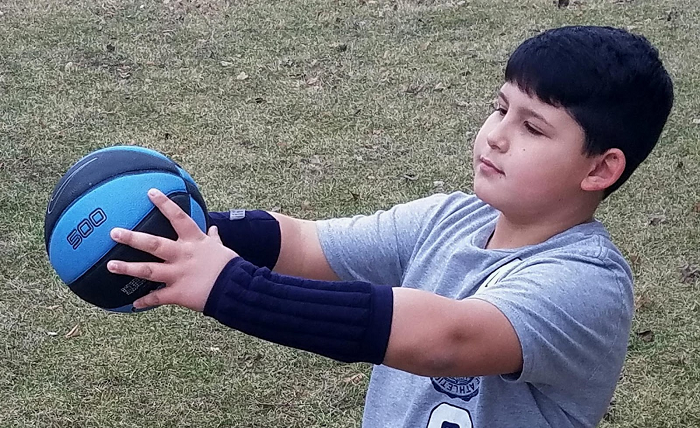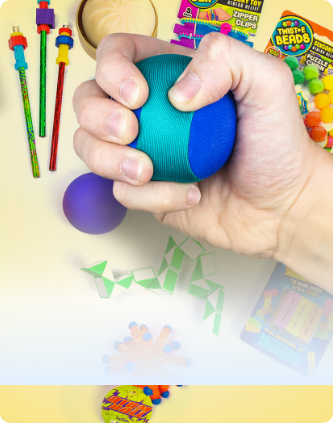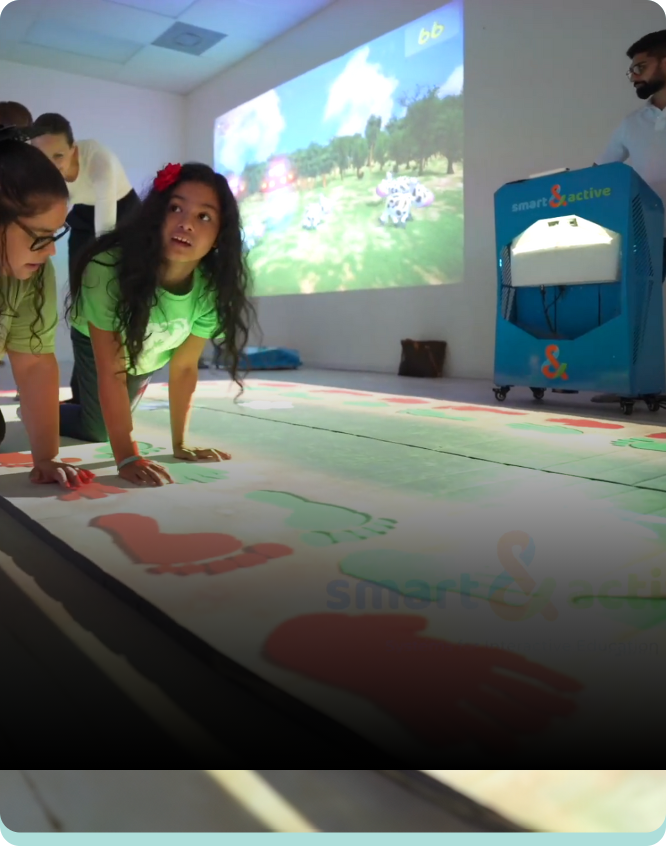We Live in a Sensory World
Posted by Mary Ann Heinz, COTA/Ret. on Apr 17th 2018

As usual, I go for my morning walk and take the same route I always take. I see the same houses and recognize neighbors in their cars as they drive by and wave.
It is threatening rain and I can see the gray, cloudy sky and hear distant thunder. I hear and feel the crush of a dry leaf under my shoe. I can hear birds singing, dogs barking, feel the wind on my face and smell, almost taste, the coming rain in the air.
I feel very much a part of my environment, and I’m comfortable. A dog runs up to the edge of the street, barking, and startles me. I look at him and know from past experience that he is not threatening.
We live in a sensory world. Our body is one big sensory organ. The skin which completely covers us is the largest sensory organ of the body.
Our sense of touch registers the slightest breeze or the gentlest brush against our skin, as well as the deepest hug. We can hear the faintest sounds, or react to noises that are loud and uncomfortable.
We can detect the slightest whiff of perfume, feel pleasure in the smell of chocolate chip cookies baking in the oven, or turn away from a smell that is overpowering or repugnant. Our wonderful brain puts all this sensory information together and allows us to make sense of our world.
We live in a sensory world, but our world is also memory. Sensory and memory go hand in hand. Our brain is able to build an interconnected web of sensory input and memory storage which is essential for learning.
The sensory journey begins in the womb when babies begin sucking their thumbs, relaxing in the soothing amniotic fluid which bathes them. They also react to sounds coming from the environment outside their confined, comfortable space. Even while passing through the birth canal they receive a gentle massage which begins to wake up systems of the body.
At birth their senses are bombarded with all the stimuli of this new environment and the sensory system will receive, interpret and store this information. Memory will then allow them to build on experiences and learning, to achieve higher levels of functioning as their central nervous system matures.
In everyday life we are seldom aware of our sensory systems at work. Our brains automatically interpret and integrate all of the incoming stimuli we are subjected to, and this in turn allows us to function in whatever capacity that is required.
Now imagine that your sensory system, for some reason, is not processing incoming stimuli as it should. Sensory signals coming into your brain are being misinterpreted. What feels normal or pleasurable to someone else, whether it is touch, movement, sound, etc., you may experience in a very different way; as possibly hostile, dangerous, frightening, painful, or confusing and those memories, in the future may cause avoidance behaviors.
You may experience tactile stimulation as overpowering or barely perceptible, and in turn may flee from something you view as painful or uncomfortable, or seek out more intense or repetitive activities. Sounds may be painful to your ears, light may be too intense. For the vast majority of people this is very difficult to comprehend, but for the child with Autism it is the world in which they too often live.
It is important here to draw the distinction between Autism and Sensory Processing Disorder (SPD). This is crucial because both Autism and SPD have over-responding and under-responding categories and are sometimes mistaken for one another.
While children with Autism can have significant symptoms of SPD, most children with SPD do not have an autism spectrum disorder. Appropriate intervention relies upon accurate diagnosis that distinguishes autistic spectrum issues from sensory issues.
So, let’s look at Autism as a different operating system. The child with Autism experiences the sensory world differently, so it stands to reason that they will react differently. We attempt to help them adapt to the world that surrounds them through various intervention strategies. But we must also learn to adapt to the child, and feel comfortable doing so. Addressing the needs of these children both at home and at school can be challenging, but also very do-able.
This is where Occupational Therapists working in the school setting can be extremely helpful. Besides working with a child, one-on-one, they can provide an individualized treatment plan that meets the child’s specific classroom needs by providing materials and suggesting activities or strategies for teachers to use.
An OT can instruct the teacher in incorporating a sensory diet into the classroom routine, provide materials such as sensory fidget toys for use at the child’s desk, or help create a quiet space within the classroom for scheduled breaks.
Allowing the child these opportunities throughout the day may help them to feel more balanced and in control, and decrease instances of outbursts or melt downs. It is equally important for a therapist to work closely with parents, instructing them in the strategies and adaptations being used at school, and addressing particular needs in the home and community.
Another valuable strategy that can be incorporated into the school day is the use of therapeutic weights. Children with Autism may have difficulty with motor planning; in other words, the ability to conceive, plan and carry out an unfamiliar or novel motor act in the correct sequence.
The use of hand and arm weights can provide additional feedback to the joints, muscles and tendons of the upper extremities for increased awareness of body movement and positioning. This is important for performing daily activities such as dressing, eating and fine motor activities.
A hand weight for example can help increase awareness of pencil grip and hand positioning for writing. Bilateral arm weights can help with coordinating movement between both sides of the body for gross motor activities.
The added weight can also have a calming effect which may help with regulation, and may facilitate smoother transitions from classroom to cafeteria, to gym class or getting on and off the bus. The teacher, parent and student can be instructed in the use of weights for appropriate times throughout the day.
Let’s not forget another very important aspect, which is education. Both parents and teachers are an integral part of the team. If they understand the reasons for a child’s behavior they are much more likely to follow through with recommendations and interventions given by the Occupational Therapist, especially if they begin to see positive results. While these strategies may not work all the time, it is important to stress a consistent approach, and give support and encouragement.
We are all sensory learners. We learn by touching, tasting, smelling, seeing, hearing. Children with Autism are also sensory learners, and no matter where they fall on the spectrum, they will benefit from a well-planned program that will help them experience their senses, and life in a more positive and meaningful way.
Pulling it all together may seem like a daunting task at times, but addressing underlying sensory issues can also lead to empowering children with Autism to have more control over their environment and their lives. From birth we are all products of our senses, and it is important to remember just how powerful these senses are.







